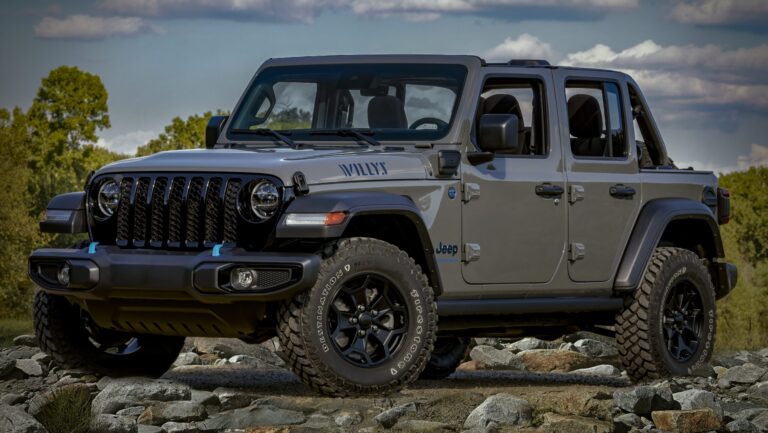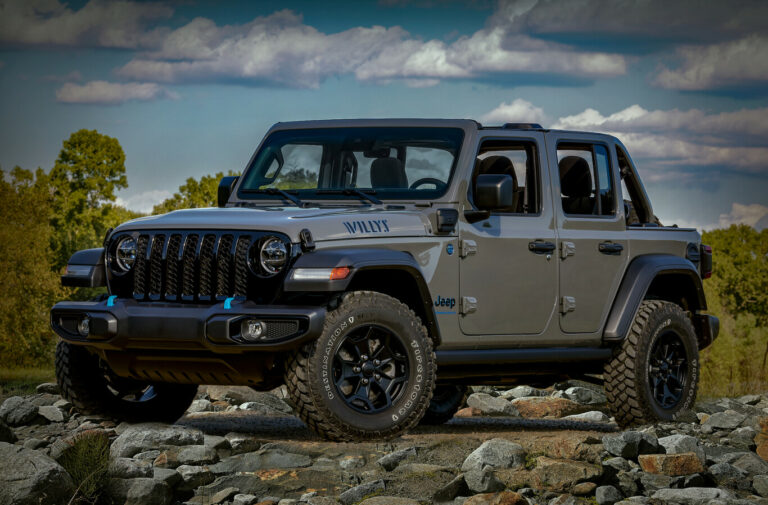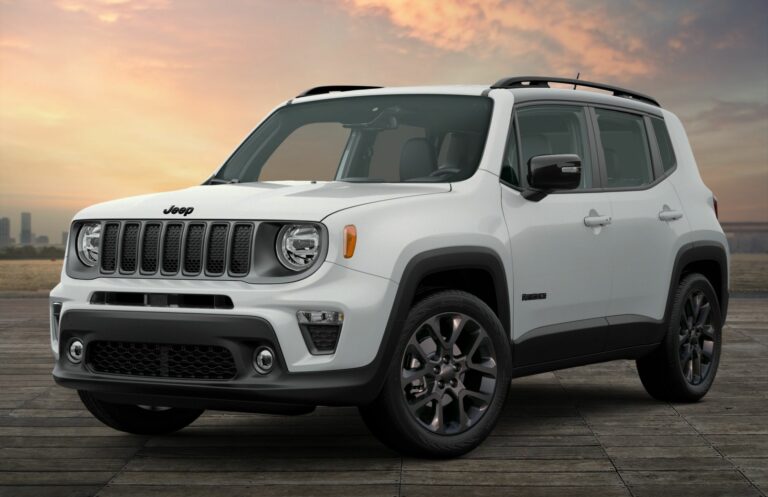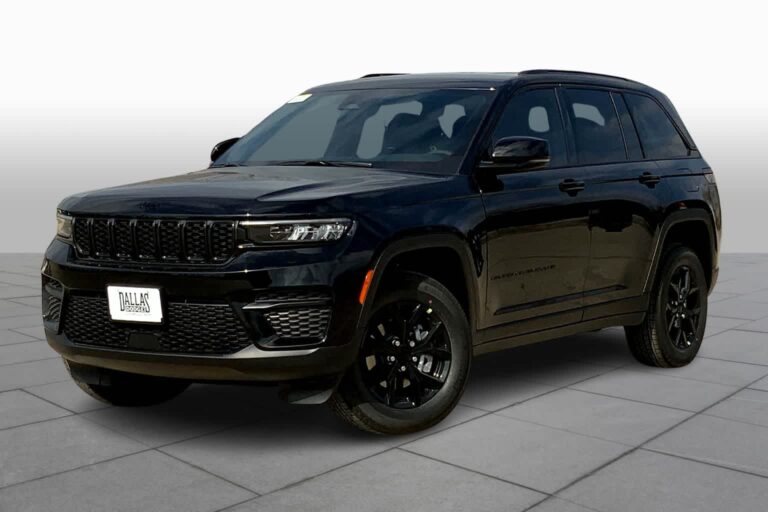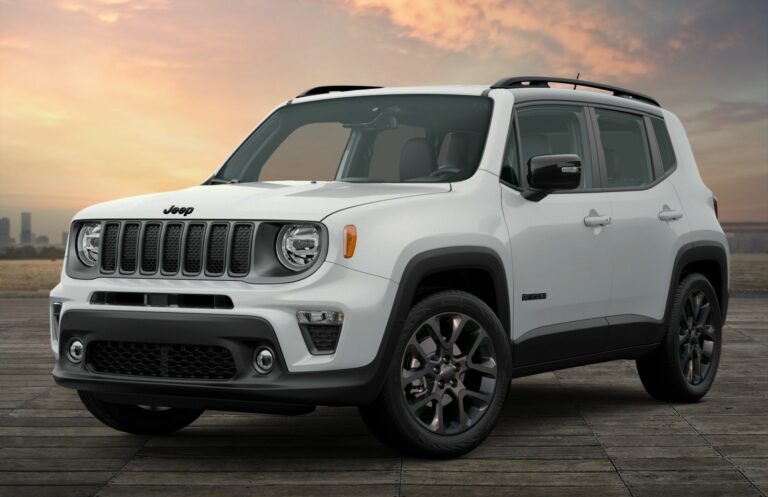What Does A Jeep Wrangler 2 Door Weigh? A Comprehensive Guide
What Does A Jeep Wrangler 2 Door Weigh? A Comprehensive Guide jeeps.truckstrend.com
The iconic Jeep Wrangler, with its rugged appeal and unparalleled off-road prowess, has captivated adventurers for decades. Among its various configurations, the 2-door model stands out for its classic proportions, agility, and often, a slightly lighter footprint compared to its 4-door sibling. But "What does a Jeep Wrangler 2 Door weigh?" is a question that goes beyond mere curiosity. Understanding your Wrangler’s weight is crucial for everything from optimizing performance and fuel economy to ensuring safety, proper towing, and even adhering to specific off-road trail regulations.
This comprehensive guide will delve into the various factors influencing the weight of a 2-door Jeep Wrangler, provide estimated weight ranges for different models and generations, and explain why this knowledge is vital for every Wrangler owner.
What Does A Jeep Wrangler 2 Door Weigh? A Comprehensive Guide
Understanding the Fundamentals: Curb Weight vs. GVWR
Before we dive into specific numbers, it’s essential to differentiate between two key weight terms:
- Curb Weight: This is the weight of the vehicle itself, including all standard equipment, a full tank of fuel, and all necessary fluids (oil, coolant, etc.), but without passengers or cargo. This is the figure most commonly discussed when referring to a vehicle’s weight.
- Gross Vehicle Weight Rating (GVWR): This is the maximum permissible total weight of the vehicle when fully loaded. It includes the curb weight plus the weight of all passengers, cargo, and any accessories or modifications. Exceeding the GVWR can compromise safety, handling, braking, and void warranties.
For a 2-door Jeep Wrangler, its curb weight will vary based on several factors, while its GVWR provides the critical limit for safe operation.
Factors Influencing a 2-Door Wrangler’s Weight

The weight of a 2-door Jeep Wrangler is not a static number. It fluctuates significantly depending on its specific configuration, generation, and modifications. Here are the primary factors:
1. Generation and Platform Evolution
Jeep has evolved the Wrangler over the years, with each new generation bringing changes in materials, engineering, and standard features that impact weight.
- TJ (1997-2006): Generally lighter due to simpler construction and fewer standard features.
- JK (2007-2018): Introduced significant updates, including a larger frame, more robust axles, and increased creature comforts, leading to a noticeable weight increase over the TJ.
- JL (2018-Present): While larger and more capable, the JL generation incorporates lightweight materials like aluminum for doors, hinges, and the hood, aiming to offset the weight added by new technology and stronger components. This strategic use of lighter materials helps keep the weight in check despite added features.

2. Trim Level
Within each generation, different trim levels come with varying equipment, which directly impacts the curb weight.

- Sport: Typically the lightest trim, as it comes with the most basic features and smaller tires.
- Sahara: Often includes more premium interior features, larger wheels, and additional technology, adding some weight.
- Rubicon: Designed for extreme off-roading, the Rubicon is the heaviest trim. It features heavier-duty axles (e.g., Dana 44 front and rear), larger off-road tires, electronic disconnecting sway bars, rock rails, and sometimes heavier transfer cases, all of which contribute significantly to its curb weight.
3. Engine and Transmission
While less impactful than trim or generation, the powertrain choice can add or subtract a small amount of weight.
- Engine Type: A V6 engine (like the 3.6L Pentastar) might be slightly heavier than a smaller 4-cylinder turbocharged engine (like the 2.0L turbo in the JL), or vice-versa depending on the specific engine’s construction. Diesel engines, if available in a 2-door configuration, would typically be heavier.
- Transmission: Automatic transmissions generally weigh slightly more than their manual counterparts due to their more complex internal components and larger fluid reservoirs.
4. Top Configuration
The type of roof installed on your 2-door Wrangler also plays a role.
- Soft Top: The lightest option, offering maximum open-air freedom.
- Hard Top: Significantly heavier than a soft top, providing better insulation, security, and noise reduction. Many owners opt for the hard top, adding considerable pounds.
5. Aftermarket Modifications
This is arguably the most significant variable for many Wrangler owners. Aftermarket modifications can drastically increase a 2-door Wrangler’s weight. Common additions include:
- Heavy-Duty Bumpers & Winches: Steel bumpers and winches can add 100-200 lbs or more to the front end.
- Larger Tires and Wheels: Heavier, larger tires and robust aftermarket wheels can add substantial unsprung weight.
- Lift Kits & Suspension Components: While some components might be lighter, heavy-duty springs, shocks, and control arms can add weight.
- Rock Sliders & Armor: Steel armor plates and rock sliders provide protection but are heavy.
- Roof Racks & Rooftop Tents: These add considerable weight, especially when loaded.
- Interior Gear: Recovery gear, tools, spare parts, and camping equipment can quickly add hundreds of pounds.
Estimated Curb Weights of Popular 2-Door Jeep Wrangler Models
To give you a clearer picture, here are estimated curb weights for common 2-door Jeep Wrangler models. Please note that exact weights can vary slightly based on specific options and manufacturing tolerances. Always refer to your vehicle’s door jamb sticker for precise GVWR and GAWR (Gross Axle Weight Rating).
| Generation | Model/Trim | Engine | Transmission | Top Type | Estimated Curb Weight (lbs) | Estimated Curb Weight (kg) | Notes |
|---|---|---|---|---|---|---|---|
| JL | Sport | 3.6L Pentastar V6 | Manual/Auto | Soft Top | 3,850 – 3,950 | 1,746 – 1,792 | Lighter base model. |
| JL | Rubicon | 3.6L Pentastar V6 | Manual/Auto | Hard Top | 4,050 – 4,200 | 1,837 – 1,905 | Heavier due to off-road components. |
| JL | Sport | 2.0L Turbo I4 | Auto | Soft Top | 3,900 – 4,000 | 1,769 – 1,814 | Similar weight to V6 Sport. |
| JK | Sport | 3.6L Pentastar V6 | Manual/Auto | Soft Top | 3,750 – 3,850 | 1,701 – 1,746 | Base model. |
| JK | Rubicon | 3.6L Pentastar V6 | Manual/Auto | Hard Top | 3,950 – 4,100 | 1,792 – 1,860 | Heavier than Sport due to off-road gear. |
| TJ | Sport/Sahara | 4.0L Inline-6 / 2.5L | Manual/Auto | Soft Top | 3,050 – 3,300 | 1,383 – 1,497 | Significantly lighter than JK/JL generations. |
Note: These are estimated curb weights. Your specific vehicle’s weight may vary. Always check your owner’s manual or door jamb sticker for precise figures.
Why Knowing Your 2-Door Wrangler’s Weight Matters
Understanding the weight of your 2-door Jeep Wrangler is more than just trivia; it has significant practical implications for ownership and operation:
1. Safety and Performance
- Braking: A heavier vehicle requires longer stopping distances. If you’ve added significant weight, your stock brakes might be inadequate.
- Handling: Increased weight, especially if poorly distributed or raising the center of gravity, can negatively affect handling, stability, and rollover risk, particularly off-road.
- Acceleration & Fuel Economy: More weight means the engine has to work harder, leading to slower acceleration and reduced fuel efficiency.
2. Towing and Payload Capacity
- Towing: Your Wrangler’s towing capacity is directly related to its curb weight, GVWR, and GCWR (Gross Combined Weight Rating – the max weight of the loaded vehicle and trailer). Knowing your curb weight helps you calculate how much additional weight (passengers, cargo) you can carry while still safely towing.
- Payload: This is the maximum weight of passengers and cargo your vehicle can safely carry. It’s calculated by subtracting the curb weight from the GVWR. Exceeding payload limits is dangerous and can damage your vehicle.
3. Off-Roading Considerations
- Trail Limits: Some designated off-road trails have weight restrictions to protect the environment or due to bridge/road limitations.
- Suspension & Tires: Knowing your vehicle’s actual weight (especially after modifications) is crucial for selecting appropriate springs, shocks, and tires that can handle the load and perform optimally.
- Recovery Gear: When stuck, knowing your vehicle’s weight helps you select the correct winch capacity, recovery straps, and other gear.
4. Legal and Practical Compliance
- Registration & Insurance: In some jurisdictions, vehicle weight can influence registration fees or insurance premiums.
- Axle Weight Ratings (GAWR): Your vehicle has specific Gross Axle Weight Ratings (front and rear). It’s possible to be within your GVWR but exceed an axle rating if weight isn’t distributed properly.
Practical Advice and Actionable Insights
- Check Your Door Jamb Sticker: For the most accurate GVWR and GAWR specific to your vehicle, always refer to the sticker located on the driver’s side door jamb.
- Weigh Your Modified Wrangler: If you’ve added significant aftermarket components, the only way to truly know your vehicle’s current curb weight is to take it to a public weigh station (often found at truck stops or landfills). Weigh it empty (no passengers or cargo) and then loaded to understand your actual operational weight.
- Plan Your Modifications Wisely: Before adding heavy bumpers, winches, or larger tires, consider the cumulative weight gain. Factor in how it will affect your suspension, braking, and overall performance. Opt for lightweight alternatives where possible (e.g., aluminum bumpers, synthetic winch rope).
- Distribute Weight Evenly: When loading your Wrangler with gear for a trip, try to distribute the weight as evenly as possible to maintain balance and stability. Keep heavier items low and centered.
- Adjust Tire Pressure: Remember to adjust tire pressure based on load, especially when carrying heavy cargo or towing, as recommended by your tire manufacturer or vehicle owner’s manual.
Frequently Asked Questions (FAQ)
Q: Is a 2-door Wrangler significantly lighter than a 4-door Wrangler?
A: Yes, absolutely. A 2-door Wrangler can be several hundred pounds lighter than its 4-door counterpart (typically 200-500 lbs less), primarily due to the shorter chassis, fewer doors, and less interior space.
Q: How much does removing the doors and top reduce the weight?
A: Removing the doors and top will reduce the curb weight, but not drastically in the grand scheme of things. Each door weighs around 50-60 lbs, and a hard top can be 100-150 lbs. So, while noticeable, it’s usually less than 300 lbs total, which is a small percentage of the vehicle’s overall weight.
Q: Can I increase my Wrangler’s payload or towing capacity?
A: No, you cannot legally or safely increase your vehicle’s factory-rated GVWR, GAWR, or towing capacity. These ratings are determined by the manufacturer based on the vehicle’s design, frame strength, braking system, and drivetrain components. While modifications can improve performance, they don’t change the official ratings.
Q: Where can I find the precise weight of my specific 2-door Wrangler?
A: For your specific vehicle’s GVWR and GAWR, look at the sticker located on the driver’s side door jamb. For an accurate curb weight after modifications, you’ll need to use a public weigh station.
Q: What is the average weight of a JK 2-door Rubicon?
A: An estimated average curb weight for a JK 2-door Rubicon (with hard top) is typically in the range of 3,950 – 4,100 lbs (1,792 – 1,860 kg).
Conclusion
The weight of a 2-door Jeep Wrangler is a dynamic figure, influenced by its generation, trim level, engine, and especially, any aftermarket modifications. While generally lighter and more agile than its 4-door sibling, a 2-door Wrangler’s curb weight can range from approximately 3,000 lbs for older TJ models to over 4,200 lbs for a heavily optioned JL Rubicon.
Understanding "What does a Jeep Wrangler 2 Door weigh?" is paramount for safe operation, optimal performance, and making informed decisions about modifications. By knowing your vehicle’s actual weight and its factory limits, you can ensure your beloved Wrangler continues to deliver the legendary capability and adventure it was designed for, safely and efficiently, for years to come.


